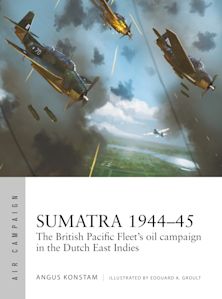Arctic Convoys 1942
The Luftwaffe cuts Russia's lifeline
Arctic Convoys 1942
The Luftwaffe cuts Russia's lifeline
Description
A new history of the most crucial few months of the Arctic Convoys, when Germany's air power forced the Allies to retreat to the cover of winter.
Between spring and autumn 1942, Germany was winning the battle of the Arctic Convoys. Half of PQ-15 was sunk in May, PQ-17 was virtually obliterated in July, and in September 30 percent of PQ-18 was sunk. The Allies were forced to suspend the convoys until December, when the long Arctic nights would shield them.
Mark Lardas argues that in 1942, it was Luftwaffe air power that made the difference. With convoys sailing in endless daylight, German strike aircraft now equipped and trained for torpedo attacks, and bases in northern Norway available, the Luftwaffe could wreak havoc. Three-quarters of the losses of PQ-18 were due to air attacks. But in November, the Luftwaffe was redeployed south to challenge the Allied landings in North Africa, and the advantage was lost. Despite that, the Allies never again sailed an Arctic convoy in the summer months.
Fully illustrated with archive photos, striking new artwork, maps and diagrams, this is the remarkable history of the Luftwaffe's last strategic victory of World War II.
Table of Contents
Chronology
Attacker's Capabilities
Defender's Capabilities
Campaign Objectives
The Campaign
Aftermath and Analysis
Conclusion
Bibliography
Index
Product details
| Published | Sep 15 2022 |
|---|---|
| Format | Ebook (PDF) |
| Edition | 1st |
| Extent | 96 |
| ISBN | 9781472852410 |
| Imprint | Osprey Publishing |
| Illustrations | Illustrated throughout with around 60 photos and at least 14pp of colour illustrations |
| Series | Air Campaign |
| Short code | ACM 32 |
| Publisher | Bloomsbury Publishing |
Reviews

Resources
Discover More
Visit our exclusive member's website to see artwork, maps, and more from this book.

Resources
Book Vote
Tell us what titles you would like to see published by Osprey, then vote for your favourites in our monthly book vote!



























